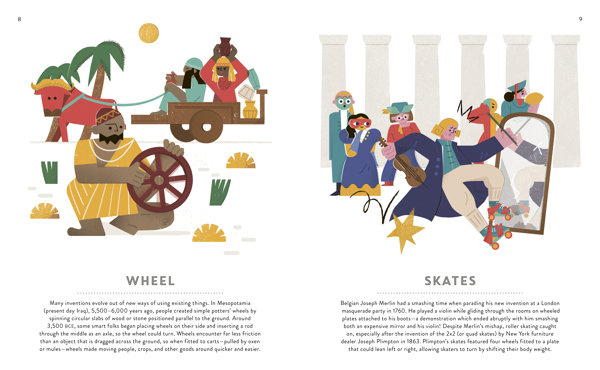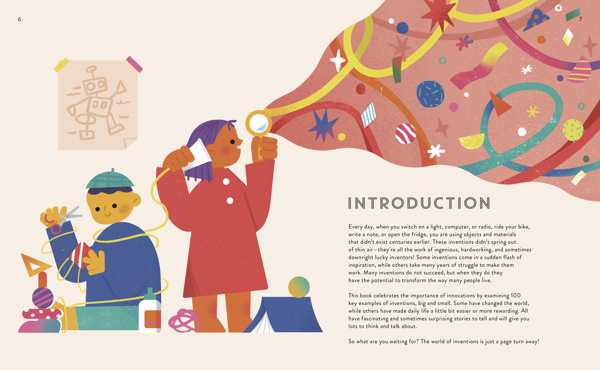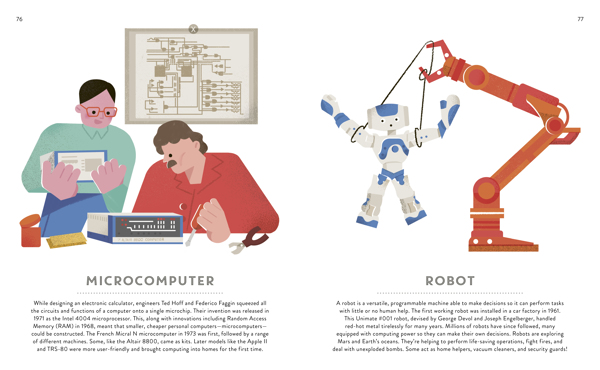Sharing is caring, and kids love to share, bits of knowledge that is. Those trivial bits of fun knowledge that are 100% true, sometimes odd, many times functional, and always fascinating are just the sort of thing that kids will share without prompting. Think like Jonathan Lipnicki from Jerry Maguire, and then share your trivia that’s not just related to the human head. 100 Things to Know About Inventions is loaded with a handful of obscure facts about 100 technological advances that people have created.
What will immediately suck in those fourth and fifth-grade students is the combination of text and illustration. The illustrations are by Yiffy Gu and harken back to a simple, yet very effective, style of art. It’s Mad Men, but simpler, and not so babyish that it will repel those 10-year-old curiosity seekers. Gu’s art also compliments the paragraph nuggets of information by Clive Gifford very well.
Over 100 wide-ranging inventions, Gifford introduces disparate subjects that any upper elementary student will know of but probably won’t know much about. Louis Braille was a French boy who was unable to see, so he invented a system of raised dots that would allow him to understand the written world around him. Braille was only 15 when he thought up this idea.
Walter Hunt was an inventor who had created a myriad of things like shoes that allowed circus people to walk up walls and the sewing machine. However, it was his most widely used invention that many of us use every day that we’re most familiar with, and he sold its patent for $400 in 1849 once he obtained the patent. The safety pin and its simple construction was something that he fiddled with in his office and is used millions of times each day.
Have you ever taken a picture of a cat and had those evil red eyes looking back at you? Cat eyes is the nickname for something that any driver who’s navigated a curvy road has seen. They’re the reflective things that are embedded in the road to deflect your car’s headlights. And here I thought they were really just bike reflectors bought in bulk from some bicycle company, but instead, an Englishman named Percy Shaw invented them in 1934.
100 things to know about inventions100 Things to Know About Inventions is loaded with stories like that. These vignettes are engaging to read and will hold those younger who are having the book read to them glued to their attention. Even if you were to read it to a group of first graders, and simplify some of the words, they would understand the stories, and be completely mesmerized by them.
When we read to first or second graders we’ll have them pick a page from a range of numbers that we give them. This is a great book for that because any page will make them curious. Books like this will be compared to National Geographic Kids for all of the right reasons. Its content is self-contained and can be jumped around from page to page and wherever you go it’s 100% interesting.
100 Things to Know About Inventions is by Clive Gifford with illustrations by Yiffy Gu and available on Happy Yak, an imprint of Quarto Publishing.
There are affiliate links in this post.







 Facebook
Facebook Twitter
Twitter Flickr
Flickr GooglePlus
GooglePlus Youtube
Youtube